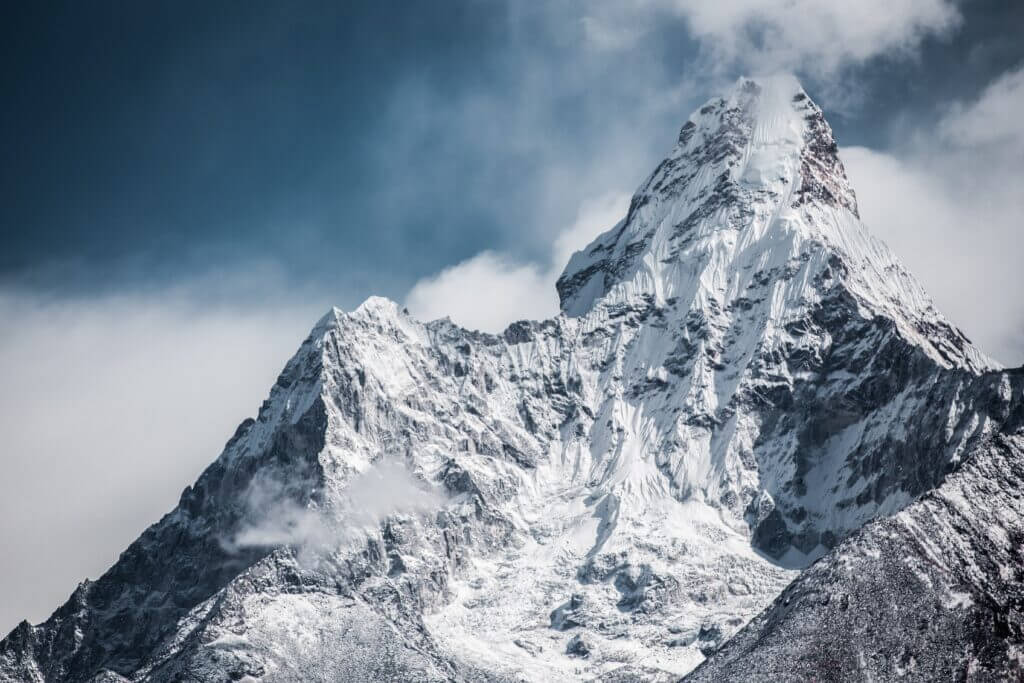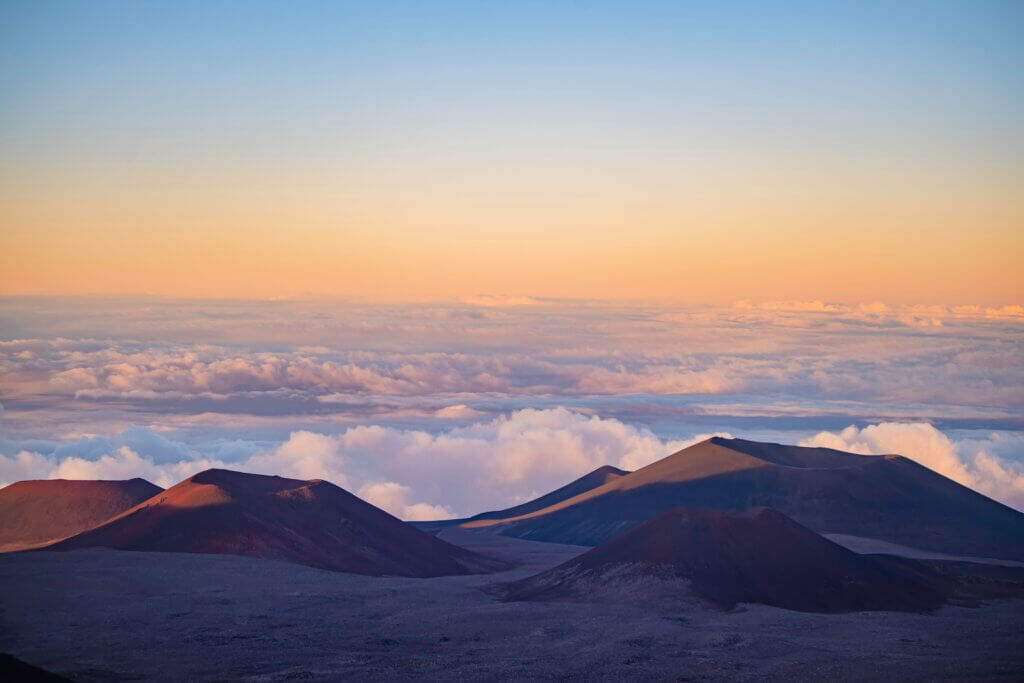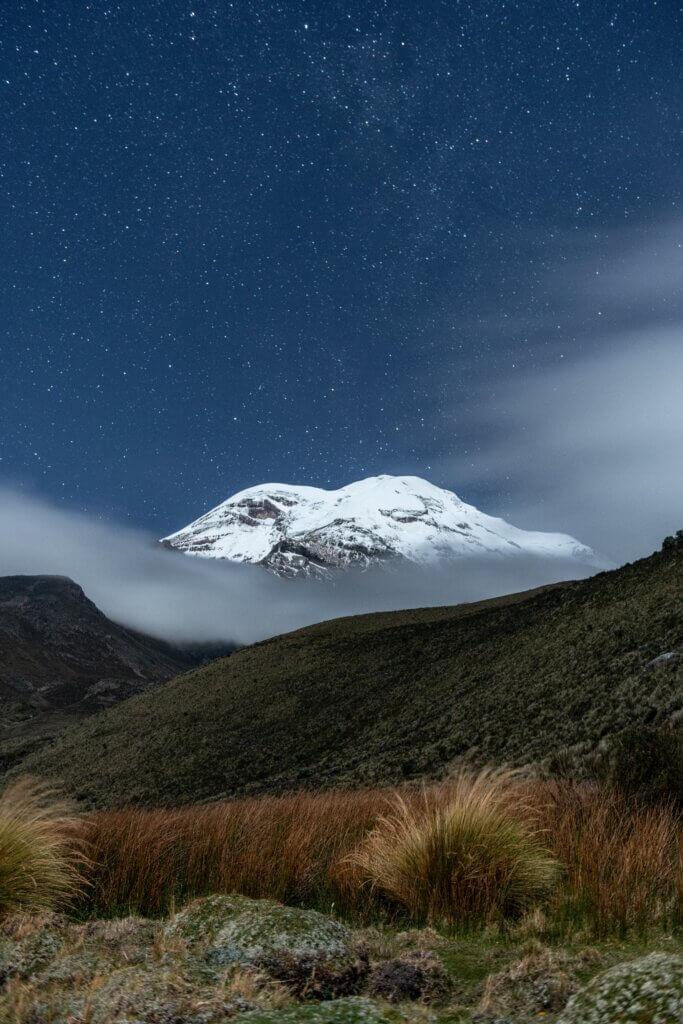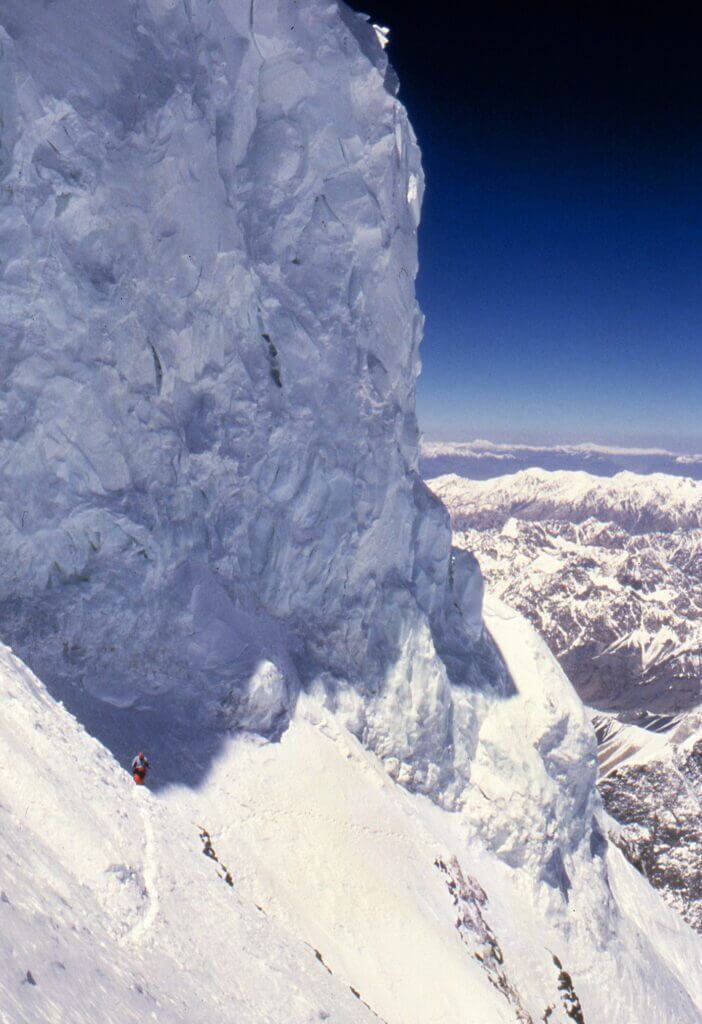The quest to identify the world’s tallest mountain is more complex than it might initially appear. Commonly, the title is bestowed upon Mount Everest, renowned for its towering peak above sea level. However, this conventional height measure, from sea level to summit, is just one of several ways to assess a mountain’s stature. Intriguingly, when other methods are employed, such as measuring from base to peak or considering the distance from the Earth’s centre, different mountains emerge as contenders for the title of the tallest. This article delves into the fascinating nuances of mountain measurements, exploring how the definition of “tallest” can shift based on the chosen criteria, thereby presenting a more intricate picture of these majestic natural formations.
Mount Everest: the tallest mountain in the world, above sea level
Mount Everest stands as the highest mountain above sea level, a fact that has cemented its place in the annals of geography and mountaineering lore. Towering at an impressive height of 8,848.86 meters, as determined by the latest measurements, Everest dominates the Himalayan landscape. This majestic peak, also known as Chomolungma, meaning “Goddess Mother of the World” in Tibetan, holds a special place in the history of mountain climbing. It was first scaled on May 29, 1953, by Tenzing Norgay and Edmund Hillary, an achievement that has since inspired thousands of climbers.

However, the aspiration to conquer Everest is fraught with peril. The mountain’s extreme altitude and harsh weather conditions pose significant challenges and dangers. Climbers face the risks of avalanches, severe colds, and altitude sickness, among other hazards. Over 300 lives have been claimed by Everest since records began in 1922, underscoring the mountain’s formidable and unforgiving nature. Despite these dangers, Everest continues to allure adventurers and mountaineers, symbolizing the ultimate test of human endurance and spirit in the face of nature’s grandeur.
Mauna Kea: Hawaii’s Sleeping Giant – the Tallest Mountain in the World
Mauna Kea, a dormant volcano in Hawaii, presents a different perspective on what constitutes the world’s tallest mountain. When measured from its base, which lies deep below the Pacific Ocean, to its peak, Mauna Kea stretches over 10,000 meters, surpassing Mount Everest in terms of sheer vertical rise. This measurement presents a stark contrast to the traditional method of measuring from sea level, revealing Mauna Kea’s hidden grandeur.

Most of Mauna Kea’s massive structure is submerged, making its visible peak appear modest compared to the towering heights of the Himalayan giants. This unique aspect of Mauna Kea challenges conventional perceptions of mountain size and highlights the diverse nature of Earth’s topography. The mountain rises 4,205 meters above sea level, a figure that belies the true extent of its colossal size.
Adding to Mauna Kea’s significance is the presence of an astronomical observatory at its summit. The observatory takes advantage of the mountain’s high elevation and the exceptionally clear skies above Hawaii, making it one of the world’s premier locations for astronomical observation. This scientific installation underscores Mauna Kea’s importance not only in the realm of geography but also in the advancement of space science, offering a window to the universe from its towering, yet mostly hidden, heights.
Mount Chimborazo: the Tallest Mountain in the World, Earth’s Farthest Summit from the Core
Mount Chimborazo, an inactive stratovolcano located in Ecuador, offers a unique claim in the discussion of the world’s tallest mountains. While not the highest in terms of altitude above sea level, Chimborazo holds the distinction of having its peak as the farthest point from the Earth’s centre. This intriguing fact is due to the Earth’s shape, an oblate spheroid, which is wider at the equator than at the poles.

Chimborazo’s location near the equator is pivotal to its unique status. The Earth’s equatorial bulge means that mountains along this line are naturally closer to outer space than their higher-altitude counterparts in other parts of the world—Chimborazo, just one degree south of the equator, benefits from this bulge. As a result, its summit is about 2,072 meters farther from the centre of the Earth than the peak of Everest, making it the highest point on Earth in terms of distance from the planet’s core.
Beyond its geographical significance, Mount Chimborazo also holds cultural and historical importance. For centuries, it has been a landmark in Andean culture, revered and respected by the local communities. Its imposing presence has been a source of inspiration and awe, contributing to the rich tapestry of indigenous and colonial histories in the region. Chimborazo’s unique status in the annals of geography serves as a reminder of the diverse and complex nature of our planet’s topography, challenging our perceptions of greatness and scale.
Measuring the Giants: The Complexities of Mountain Heights
The quest to determine the “tallest” mountain is not as straightforward as it may seem, largely due to the varying measurement criteria. The most common method, measuring height above sea level, places Mount Everest at the top. However, when considering the total distance from base to peak, Mauna Kea in Hawaii surpasses Everest despite its peak being significantly lower in altitude. Furthermore, Mount Chimborazo in Ecuador takes the crown when measuring the distance from the Earth’s centre, thanks to the planet’s oblate spheroid shape.
These differing criteria for measuring height underscore the complexities involved in determining the true “tallest” mountain. Each method offers a unique perspective, reflecting the diverse and intricate nature of Earth’s topography. This variation in measurement criteria not only highlights the physical characteristics of these mountains but also challenges our perception of greatness and scale in the natural world.
The technical challenges in accurately measuring mountain heights add another layer of complexity. Advances in technology, such as GPS and other geodetic measurement tools, have significantly improved accuracy. These modern methods allow for precise readings of a mountain’s elevation and position, taking into account various factors that can affect measurements, such as the Earth’s curvature and local variations in gravity.
Additionally, the Earth’s shape and the changing sea levels further complicate these measurements. The planet’s oblate spheroid form means that the distance from the centre of the Earth to the surface varies depending on geographical location, particularly at the equator compared to the poles. Sea level, used as a baseline in many measurements, is not constant either, varying in different parts of the world and changing over time due to factors like climate change.
In conclusion, the endeavour to measure and compare the heights of the world’s tallest mountains is a task riddled with technical challenges and varying methodologies. It is a pursuit that not only requires advanced technology and an understanding of geophysical phenomena but also invites a broader appreciation of the majestic and complex nature of our planet’s mountainous landscapes.
The Majestic High Peaks: Beyond the Eight-Thousanders
While the “Eight-thousanders,” a group of mountains exceeding 8,000 meters, primarily in Asia, hold a special place in the world of mountaineering, there are other significant peaks around the globe that are noteworthy for their height and unique challenges. Among these are K2, Denali, and Aconcagua, each with its own distinct characteristics.
K2, standing at 8,611 meters, is the second-highest mountain in the world and is located on the China-Pakistan border. Known for its treacherous ascent, K2 is often regarded as a more formidable challenge than Everest, attracting climbers who seek a more demanding experience. Denali, in Alaska, USA, is the highest peak in North America, reaching 6,190 meters. It is renowned for its extreme cold and harsh climatic conditions, making it a formidable climb. Aconcagua, towering at 6,961 meters in Argentina, holds the title of the highest mountain outside of Asia and is the tallest in both the Southern and Western Hemispheres.

These mountains, though not part of the “Eight-thousanders,” are remarkable in their own right. The “Eight-thousanders” refer specifically to the 14 mountains that exceed 8,000 meters, mostly located in the Himalayas and Karakoram ranges. This exclusive group of mountains represents some of the most challenging and dangerous climbs in the world, with each peak offering unique obstacles and attracting climbers who wish to test their limits against some of the highest points on Earth.
The allure of these mountains extends beyond their sheer height. They symbolize the Earth’s diverse and dynamic landscapes, presenting ultimate challenges to mountaineers and adventurers. From the steep, icy slopes of K2 to the thin, oxygen-poor air of the high Himalayas, these mountains continue to captivate and challenge those who seek to explore the extremes of the natural world and human endurance.
The Ascent of Giants: Mountaineering Through the Ages
The history of mountain climbing and exploration is a tale of human ambition, endurance, and the relentless pursuit of the extraordinary. This journey began centuries ago, with early ascents driven more by necessity or spiritual reasons than the pursuit of adventure. However, the modern era of mountaineering can be traced back to the 19th century, when climbing evolved into a recreational and scientific endeavour.
The conquest of these colossal peaks has seen remarkable achievements. The first successful ascent of Mount Everest in 1953 by Tenzing Norgay and Edmund Hillary marked a pivotal moment in mountaineering history, setting the stage for future explorations. Since then, mountaineers have continuously pushed the boundaries of what was considered possible, achieving feats such as climbing without supplemental oxygen, winter ascents, and solo expeditions.

However, these achievements come with significant challenges and risks. Climbers face extreme weather, avalanches, the risk of falls, and altitude sickness. The higher the climb, the more perilous the conditions, with thinning air and frigid temperatures. Over the years, these mountains have claimed many lives, a sobering reminder of the inherent dangers of high-altitude climbing. Despite these risks, the allure of these peaks remains undiminished, drawing climbers from around the world, each yearning to test their limits against some of the most daunting natural wonders on the planet.
Today, mountain climbing is a blend of adventure, sport, and science. It attracts a diverse range of enthusiasts, from professional climbers to researchers and thrill-seekers. The field has also seen advancements in gear and technology, improving safety and accessibility. Yet, the essence of mountaineering remains unchanged – a profound human endeavour to reach the highest points on Earth, driven by a blend of curiosity, challenge, and the desire to stand atop these towering sentinels of nature.
Peaks of Influence: Environmental and Cultural Impact
The world’s tallest mountains hold profound environmental and cultural significance, influencing both the ecosystems they tower over and the societies that revere them. Environmentally, these mountains are not just majestic landforms but vital components of the Earth’s ecosystem. They play a crucial role in influencing climate patterns and are home to diverse flora and fauna, some of which are endemic and adapted to the extreme conditions of high altitudes.
Mountains like Everest, Denali, and others impact weather systems and water cycles. They act as natural barriers affecting wind and precipitation patterns, and their snow-capped peaks are sources of major rivers, providing essential water supplies for millions of people. The ecosystems within these mountains are delicate and often sensitive to changes in climate, making them important indicators of environmental change. However, these fragile ecosystems are increasingly under threat from climate change, which is causing glaciers to retreat and altering habitats at an alarming rate.
Culturally, these mountains have held deep spiritual and symbolic significance for centuries. For many societies, they are sacred spaces, revered as the abode of gods or as spiritual entities themselves. In the Himalayas, for instance, Mount Everest is revered by the local Sherpa and Tibetan communities. Similarly, Denali is deeply significant to the indigenous Koyukon people, who regard it as a central figure in their cosmology.
Mountains often feature prominently in myths, legends, and religious practices, reflecting their importance in the collective consciousness of various cultures. They have inspired countless artists, poets, and writers, capturing the human imagination with their awe-inspiring presence. The cultural significance of these mountains extends beyond their physical boundaries, influencing local customs and traditions and even shaping national identities.
The Summit of Wonder: Reflecting on Earth’s Tallest Mountains
The world’s tallest mountains, each unique in their stature and significance, collectively represent the pinnacle of natural grandeur and human aspiration. Mount Everest, standing as the highest point above sea level, has long been the epitome of mountaineering challenges. Mauna Kea, with its immense base-to-peak height, redefines the concept of ‘tallest’ by extending the measurement beneath the ocean’s surface. Mount Chimborazo, the farthest point from the Earth’s centre, adds another dimension to this discussion, highlighting the complexities of our planet’s shape.
These mountains are not just physical entities; they are symbols of the environmental and cultural richness of our world. They play critical roles in their ecosystems, influencing climate and weather patterns, and are home to unique flora and fauna. Culturally, they hold profound spiritual significance, woven into the fabric of local and indigenous communities and inspiring awe and reverence across the globe.
The history of climbing these mountains is a testament to human courage, curiosity, and the relentless pursuit of exploration. Despite the inherent dangers and challenges, mountaineers continue to be drawn to these peaks, driven by a desire to push the boundaries of human endurance and to connect with these awe-inspiring natural wonders.
In conclusion, the fascination with the world’s tallest mountains goes beyond their physical measurements. It is a reflection of their impact on our planet’s environment, their deep cultural and spiritual significance, and their ability to inspire and challenge humanity. These majestic peaks remind us of the beauty and complexity of the natural world and the enduring human spirit that compels us to explore, revere, and protect these remarkable formations.

